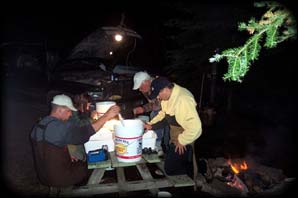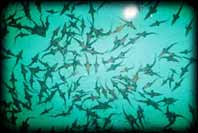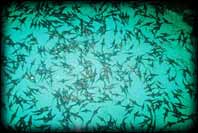2003 Lake Sturgeon Research on Black Lake
Partnership Ensures Continued Lake Sturgeon Research
By Patrick Forsythe, Michigan State UniversityThough the economy is weakened, a concerted effort to rehabilitate lake sturgeon in Cheboygan County's Black Lake remains strong.
Through a grant funded by the Michigan Department of Natural Resources (MDNR), Michigan State University (MSU) will continue their partnership with Sturgeon For Tomorrow (SFT) and the DNR Fisheries Division for much needed sturgeon research.
Patrick Forsythe, MSU doctorate student will continue the sturgeon research project on the Upper Black River. Welcome aboard Patrick!
The objectives of this study will be to:
- Develop models that relate the timing of spawning to environmental conditions
- Build on demographic and genetic data collected in 2001-2003
- Estimate fertilization rates of spawner numbers and sex ratios
- Determine sources of egg and larvae predation
- Determine factors that influence larval survival during downstream drift from spawning sites to rearing habitats
- Develop a system for assessing juvenile survival and growth

One hundred twenty-three sturgeon were tagged during the spring 2003 spawning run. There were 85 new fish (44 males and 41 females) and 38 repeat spawners (36 males and 2 females). Of the 36 repeat spawning males, 2 were tagged in the river in 2002. Therefore spawning periodicity of some of the adults in the system are more frequent than previously reported.

More than 15,000 larvae were collected during larval drift net studies. These naturally produced larvae have been transported to Wolf Lake State Fish Hatchery near Kalamazoo for rearing. Plans are being made to return the 4 to 6 inch fall fingerlings in late September or early October.

Depending on the level of survival of the fingerlings, discussions ensue regarding the feasibility of introducing a few of the Black Lake fingerlings into the Mullett and Burt Lake System.
- Home Page
- Black Lake
Sturgeon Shivaree - Black Lake Watershed
- Black Lake Sturgeon Management Plan
- Committees
- Contact Us
- Directors
- Events
- Habitat Conservation
- Membership
- Newsletters
- Our History
- Photo Gallery
- Research
- Resources
- Resources for Educators
- SFT Scholarships
- Spearing Guidelines
- State Regulations
- Sturgeon Guarding
- Sturgeon Hatchery
- Sturgeon in the Classroom

